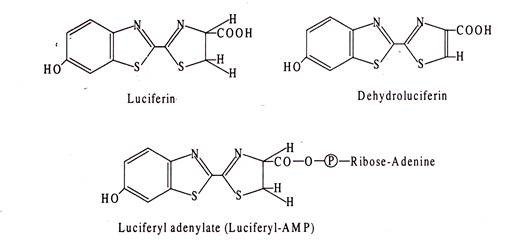ADVERTISEMENTS:
The below mentioned article provides study notes on bioluminescence which is an interesting aspect of energy metabolism.
Bioluminescence or emission of light by biological organisms is an interesting aspect of energy metabolism. Many different kinds of organisms, both prokaryotic and eukaryotic, show this property. Among the bacteria, bioluminescent species occur in the genera, Photo-bacterium, Vibrio and Beneckea. Many marine dinoflagellates also show this property. At least two fungi — Armillaria mellea and Panus stipiticus — are known to be bioluminescent. Many worms and crustaceans are also known to be light-emitters. But perhaps the most well-known among all bioluminescent organisms is the firefly (Photinus spp.).
In bioluminescence, chemical energy is converted to light energy. The emitted light in most bioluminescent organisms is bluish green in colour having an average wavelength of about 474 nm. In general, enzyme-catalysed oxidation-reduction reactions which are exergonic in nature are used to bring a molecule to an excited state. As the molecule returns to its ground state, energy is released in the form of light (photon).
ADVERTISEMENTS:
The chemical mechanism of bioluminescence is best known in the American firefly, Photinus pyralis. The same mechanism may not operate in all bioluminescent systems and different mechanisms may exist. In Photinus system, two components are involved. One of these two is luciferin, a benzthiazole derivative. The other is an oxygenase enzyme, known as luciferase which react with oxygen of air.
Luciferin in reduced form is activated by ATP and luciferase to produce enzyme-linked adenylate of reduced luciferin. The activated luciferin reacts with oxygen and exists for a short time in an excited state before it returns to its ground state, releasing a photon of light energy as shown below. One quantum of light is emitted for each molecule of luciferin oxidized.
Structures of luciferin, dehydroluciferin and luciferi adenylate are shown:
The biochemical mechanism of bacterial bioluminescence is not well-elucidated. Besides luciferin and luciferase, the probable involvement of FMN, NAD and a long-chain aldehyde like palmital has been suggested.
In firefly, the chemical reactions resulting in bioluminescence occur in the membrane-bound vesicles, called scintillons. In these bodies, luciferin remains complexed with luciferin-binding proteins. The genes controlling the light-emitting system of Photo-bacterium are located in the lux operon.
It has been possible to transfer the lux operon to E. coli making the transgenic recipients bioluminescent. The bioluminescent E. coli has been used to develop a biosensor for detecting toxic pollutants in natural waters and industrial effluents. A high level of toxic products kills the bacteria and light emission is stopped. The firefly gene controlling bioluminescence has been successfully cloned in tomato making bioluminescent tomato plants.

